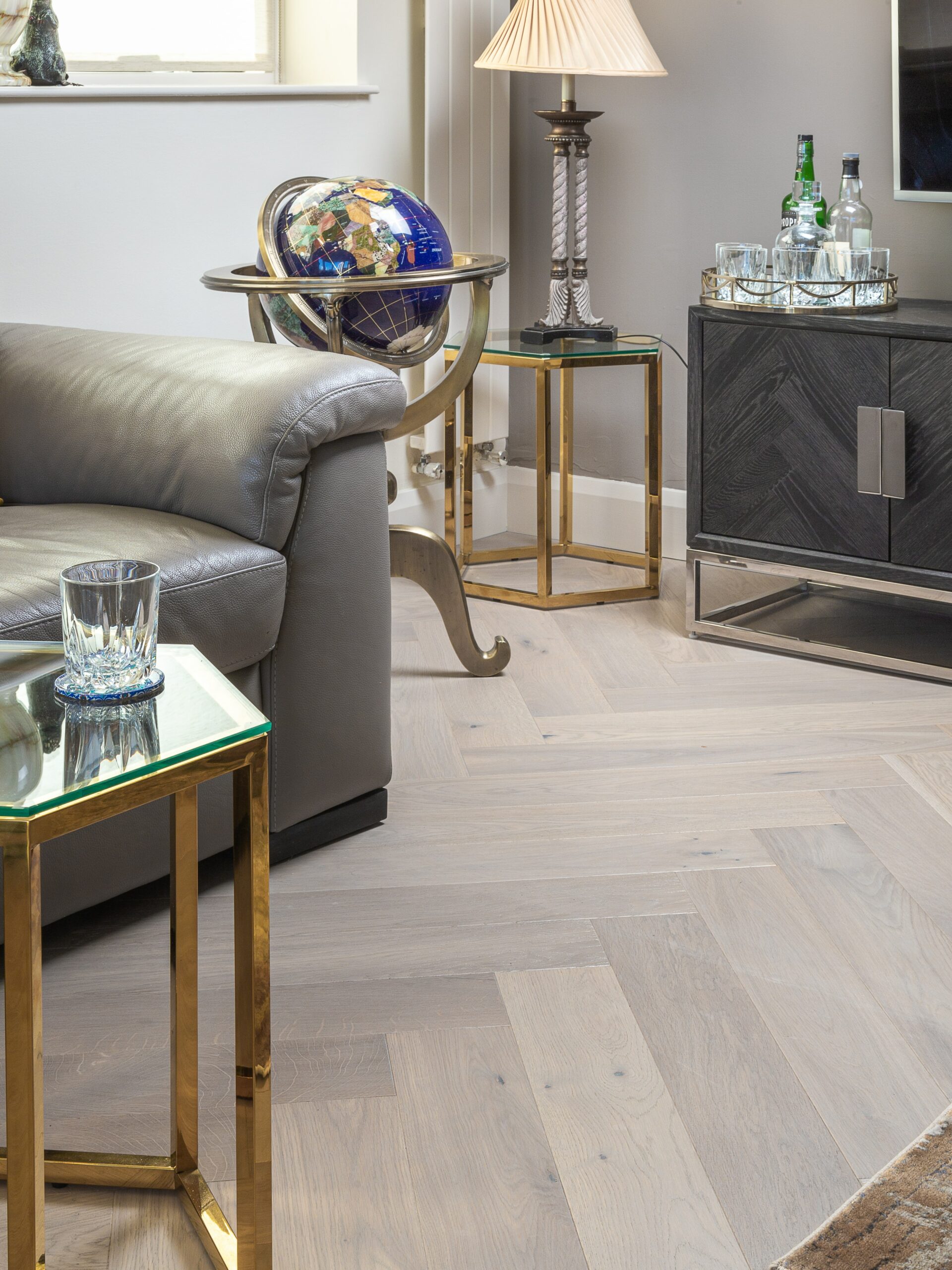When it comes to refinishing hardwood floors, there are several key factors to consider before diving into the process.
First and foremost, it’s important to understand the type of wood you’re working with.
Different types of wood require different refinishing methods, so it’s crucial to do your research and ensure you’re using the right materials for the job.

What Is Hardwood Floor Refinishing?
Hardwood floor refinishing is the process of restoring and renewing worn-out or damaged hardwood floors. It involves sanding down the existing finish, repairing any imperfections, and applying a new coat of finish to provide a fresh and beautiful look.
The first step in professional hardwood floor refinishing is sanding. This involves using a floor sander to remove the old finish and expose the bare wood underneath. The sanding process helps to smooth out any scratches, dents, or stains that may have occurred over time.
After sanding, any damaged areas, such as deep scratches or gouges, need to be repaired. This can be done by filling them with wood putty and sanding them down to create a smooth surface.
Once the repairs are complete, a new finish can be applied. There are various options available, including oil-based polyurethanes and water-based finishes. These finishes provide a protective layer that enhances the durability and longevity of the hardwood floors.
Refinishing hardwood floors offers numerous benefits. Firstly, it can increase the value of your home by restoring the natural beauty of the wood. Additionally, refinishing provides added protection against everyday wear and tear, making your floors more durable. Lastly, it enhances the aesthetic appeal of your space by giving your hardwood floors a fresh and polished look.
What You Should Know Before Refinishing Hardwood Floors
Before refinishing hardwood floors, there are several key factors that homeowners should be aware of.
Firstly, it is important to identify the correct type of wood that your floors are made of. Different hardwood species have unique characteristics and require specific refinishing techniques and products. Take the time to research and consult with flooring experts to ensure you choose the right approach.
Secondly, consider the working space required for the refinishing process. It is essential to have ample room to maneuver with floor sanders, buffers, and other equipment. Clear out the area and remove any furniture or obstacles to allow for smooth and efficient refinishing.
Lastly, homeowners should weigh the option of hiring a professional for refinishing hardwood floors. While it is possible to tackle the project yourself, professionals have the experience, expertise, and specialized tools to ensure a high-quality finish. Hiring a professional can save you time, effort, and potential mistakes.
By being aware of these factors and taking the necessary precautions, homeowners can make informed decisions and achieve optimal results when refinishing their hardwood floors.
Which Is Better: Resurfacing Or Refinishing?
When it comes to restoring the beauty of hardwood floors, there are two main options to consider: resurfacing and refinishing. Both processes can revive the appearance of your floors, but they are suitable for different situations.
Resurfacing is an ideal choice for floors that are still in good condition but have minor wear and tear or simply need a fresh coat of finish. This process involves lightly sanding the existing finish and applying a new layer of wood stain and finish. Resurfacing is a quicker and more affordable option, providing a cost-effective solution to enhance the look of your floors.
On the other hand, refinishing is necessary when your hardwood floors have significant damage such as deep scratches, water stains, or worn-out finish. This process involves sanding down the entire floor to remove the old finish, repairing any damage, and then applying multiple coats of a new finish. Refinishing is a more time-consuming and expensive process, but it is essential for restoring severely damaged or aged hardwood floors to their former glory.
In both cases, the steps involved include preparing the area, sanding the floors, cleaning up the dust, and applying the desired finish. However, refinishing requires more intensive sanding and may involve additional steps such as repairs or re-staining.
Ultimately, the choice between resurfacing and refinishing depends on the condition of your hardwood floors. For minor wear and tear, resurfacing can provide a quick and affordable solution. But if your floors have significant damage, refinishing is the better option for achieving a truly beautiful and long-lasting result.
Choosing A Finish For Your Hardwood Flooring
When it comes to refinishing hardwood flooring, choosing the right finish is crucial for longevity and aesthetic appeal. Two popular options to consider are oil-based polyurethanes and water-based finishes.
Oil-based polyurethanes offer exceptional durability and are well-suited for high-traffic areas. They provide a rich, amber hue and a traditional, glossy finish. However, they have a longer drying time compared to water-based finishes, typically taking 24 to 48 hours to dry between coats. Keep in mind that oil-based polyurethanes emit strong odors and require more ventilation during application.
Water-based finishes, on the other hand, have a faster drying time, typically drying within 2 to 4 hours between coats. They provide a clear, natural appearance and a smooth finish. They are also more resistant to yellowing, making them a great choice for lighter stain colors. Water-based finishes have a low odor and are easier to clean up, but they may not be as durable as oil-based polyurethanes, especially in high-traffic areas.
When selecting a finish, consider the amount of foot traffic your floors will endure. For high-traffic areas, oil-based polyurethanes would be the recommended choice due to their superior durability. If you prefer a more natural look or have minimal foot traffic, water-based finishes would suffice.
Regardless of the finish you choose, applying multiple coats of finish is essential for a long-lasting, beautiful floor. Each coat should be allowed to dry completely before applying the next. This process ensures proper adhesion and provides a protective layer for your hardwood floors.
Deep Cleaning Made Simple
Deep cleaning your hardwood floors is an essential part of regular maintenance to keep them looking their best. Follow this simple three-step process to achieve sparkling clean results:
Step 1: Begin by sweeping the floors thoroughly with a soft bristle broom. This will help to remove loose dirt, dust, and debris from the surface of the floor. Be sure to sweep in the direction of the wood grain to avoid scratching the surface.
Step 2: Next, use a vacuum with a hardwood floor attachment to remove any hard-to-reach dirt and dust from corners, crevices, and along baseboards. A vacuum will effectively capture smaller particles that may have been missed during the sweeping process.
Step 3: Finally, mop the hardwood floors using a microfiber cloth and a hardwood floor cleaner specifically formulated for wood surfaces. Avoid using excessive moisture, as standing water can damage the wood. Use a dampened cloth to gently clean the floors, following the grain of the wood. This will help to remove any remaining grime and leave your hardwood floors looking clean and refreshed.
Following these three simple steps, sweeping, vacuuming, and mopping, will help to deep clean and maintain the natural beauty of your hardwood floors. Regular deep cleaning will prolong the lifespan of your floors and keep them looking their best for years to come.

